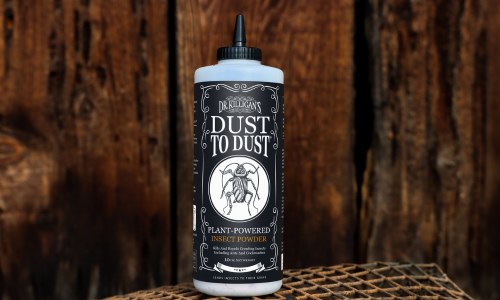Updated on March 15th, 2025
House centipedes and silverfish are two pests commonly found in damp areas like basements and bathrooms. While they often startle homeowners, they behave very differently—one is a swift predator, while the other is a slow-moving scavenger.
Understanding their differences can help you prevent and eliminate them effectively.
House centipede vs silverfish: Key differences
House centipedes and silverfish may inhabit similar spaces, but they differ in size, movement and behavior. Here’s how to tell them apart at a glance:
|
Feature |
House centipede |
Silverfish |
|---|---|---|
|
Size |
Up to 1.5 inches |
Around 0.5 inches |
|
Body shape |
Long, segmented, striped |
Flat, teardrop-shaped |
|
Color |
Yellowish-brown with dark bands |
Silvery-gray with metallic sheen |
|
Legs |
30 (15 pairs) |
6 (3 pairs) |
|
Movement |
Fast, darting |
Slow, wiggling |
|
Antennae |
Long, flexible, used for sensing |
Long, straight, with additional three tail-like appendages |
|
Habitat |
Basements, bathrooms, crawl spaces |
Attics, bookshelves, damp storage areas |

Prevent house centipedes and silverfish: Simple steps for a pest-free home
The first step in maintaining a pest-free environment: Understanding how pests infiltrate homes.
Silverfish thrive in high humidity and are commonly found in basements and bathrooms, while centipedes are drawn to damp areas, especially near leaky pipes. To keep them out, implement these preventative measures:

- Seal small cracks and gaps in the home’s exterior, including around windows, doors and foundation walls to block entry points.
- Ensure windows, doors and vents are properly sealed and screened to deter pests.
- Address moisture issues by fixing leaky pipes and using dehumidifiers in damp areas.
- Inspect items like books, furniture and plants before bringing them indoors to avoid introducing pests hidden within.
- Maintain tidiness in outdoor areas by removing vegetation close to the home and managing woodpiles and debris, which can offer shelter to pests.
Best natural solutions for house centipedes and silverfish
After implementing these measures, consider using plant-based solutions.
Dr. Killigan's Six Feet Under Plant-Powered Insect Spray: This non-toxic spray kills on contact and continues to protect for up to 30 days, boasting the fastest kill times among competitors. Ideal for floors, entry points and other bug-prone areas, Six Feet Under provides a proactive defense against pests.
Directions: Spray directly onto these pests and in areas where they are frequently observed. The spray's residual effect will deter any new pests from entering these areas.

Dr. Killigan's Dust to Dust Plant-Powered Insect Powder: This powder combines the fine silica particles with nano-tech essential oils for a dual-action formula. The microscopic edges of the silica particles dehydrate silverfish and centipedes by penetrating their exoskeletons, whereas the essential oils offer prolonged effectiveness through protected delivery. Ideal for indoor and outdoor use, it serves as a preventive shield and a defense during invasions, ensuring residual protection around your home's perimeter or at the infestation source.
Directions: Using the Insect Buster, apply a thin layer of Dust to Dust across areas frequently visited by these pests. Regularly check these spots and reapply Dust to Dust as necessary, particularly in high-traffic zones, maintaining a continuous barrier that ensures their swift demise.
Tip: The Insect Buster ensures precise, mess-free application in easy and hard-to-reach areas where centipedes and silverfish gather and hide.
Act now: Secure your sanctuary against centipedes and silverfish
Take control of your home by preventing centipedes and silverfish before they invade. Implement these preventative steps, then reinforce your defense with safe, plant-powered solutions. Explore the best natural pest control methods today.





















